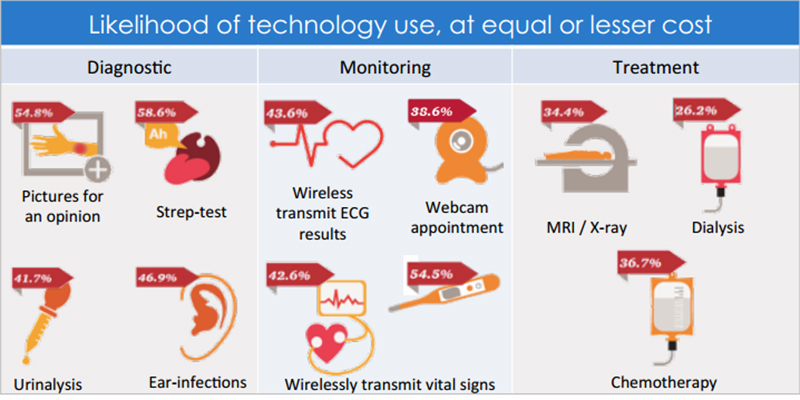Medical devices: real-time, continuous monitoring is the feature of the future

Technology penetration in Latin America has progressed at break-neck speed. Internet and smartphone usage rates are now on par with North America, Europe, and Southeast Asia. Already home to over 155 million smartphone users in 2015, the region is expected to maintain growth rates of over 20% per year in the near future. By 2019, it is estimated that 42% of the population will possess a smartphone device, and the majority will have Internet access.1-3
Successful technologies will soon permeate daily life to promote simplicity and convenience. These benefits of technology are desperately needed in the healthcare sector, where the ageing population, rise in obesity, and increase in chronic diseases have accelerated demand for expensive, sophisticated and long-term treatments.4 The need is all the more acute as public health sector resources are severely strained.
Two target demographics stand out for the adoption of effective healthcare technologies: the “technology converts” and the “digital natives,” who between them are forecasted to represent 75% of Latin America’s population by 2020.
As the population ages, more people are subject to the chronic diseases, such as cancers and arthritis, where complications can arise and require multidisciplinary care.5-7 These are usually taxing on the healthcare systems, and the patients themselves. Ageing persons will benefit from diagnostic and monitoring equipment promoting remote (or home) healthcare, which will allow for the management of chronic diseases at a distance. The home healthcare market is expected to grow by 8.6% annually and will reach a value of $17.5 billion by 2020.8 The services and products within the market (e.g., blood pressure and blood glucose monitors, hospice care, therapy) will bring services usually administered at a doctor’s office to patients directly, therefore increasing convenience for all parties. Anybody interested in maintaining a closer watch on their health in order to facilitate prevention and promote early detection will have the means and the tools to do so.
Countries with concentrated use of mobile technologies are the most attractive target markets. Argentina, Brazil, Chile, Colombia, Mexico, and Peru account for approximately 84% of all smartphone users region-wide,1 making them ripe for adoption of mHealth software solutions.
- Wearable devices (“wearables”) such as fit-bands, smart watches and augmented reality glasses are “gadgety” elements that will help bring population health management to the everyday lives of consumers. Surveys show a preference for using these devices to improve health by eating and exercising more smartly, and tracking medical information.9
Though market studies suggest Latin America is not yet ready for wearable devices, the region is forecasted to follow in the footsteps of more developed market, with alluring growth prospects of up to 41% annually through 2018.10
“Consumers are embracing their “quantified selves”, using sensors, software, and devices to measure multiple aspects of their health and well-being.”
PwC Customer Experience in the Pharmaceutical Sector
- mHealth apps – healthcare and medical smartphone applications for patients and healthcare professionals are the most promising markets in Latin America. Applications dealing with diabetes management and blood pressure & ECG management are expected to be the fastest growing sub-segments. The global mHealth solutions market is expected to reach $59 billion by 2020, growing 33% annually, and Brazil and Mexico are expected to offer the largest opportunities region-wide.11
- Wirelessly connected devices such as blood pressure cuffs and infusion pumps are the next frontier. Their attractiveness is their ability to effortlessly collect data, present it to patients and transmit it to physicians. Automation and ease of use are key attributes in such devices, which are mainly designed for the elderly and people with diabetes.
Each of these markets will promote the adoption of a more holistic approach to healthcare, which will eventually lead to an industry-wide shift away from routine medical checkups to data-driven, “as needed” appointments. People will be able to monitor their health automatically and manage their data and health-related decisions whenever they want. This represents a genuine paradigm shift in healthcare, which will pave the way towards leaner, connected and personalized health systems.
 Source: GHI Analysis based on HRI/CIS Wearables Consumer Survey (2013),USA.
Source: GHI Analysis based on HRI/CIS Wearables Consumer Survey (2013),USA.
www.globalhealthintelligence.com 10




